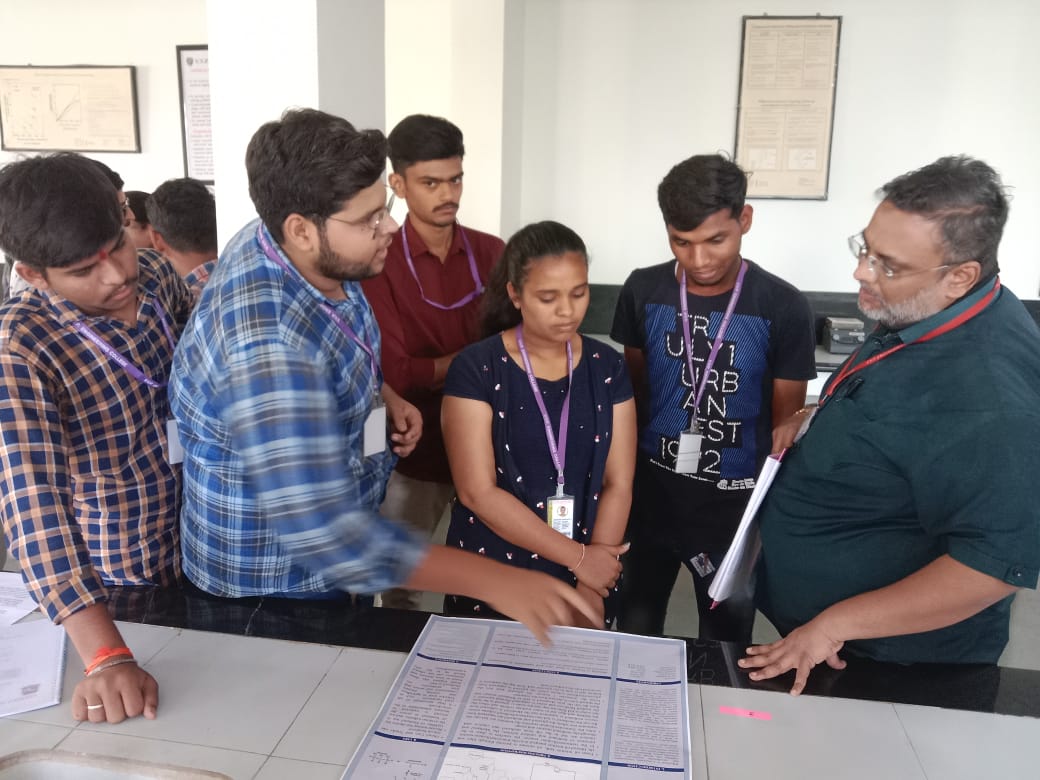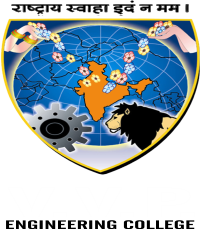Treatment of Industrial and Domestic waste water
Team Members:Pathar Brijesh Rajeshbhai, Kakasaniya Prince Ramnikbhai, Nandaniya Ketul Lakhamanbhai, Gandha Jignesh Manishkumar
Guided by: Prof. Rahul G.Vaidya (rahul.vaidya.ch@vvpedulink.ac.in)
Today, Wastewater treatment (WWT) probably is more concentrating on removing phosphorus and nitrogen than pathogens, since these elements leads to eutrophication and deterioration of our natural water ecosystems. A large number of biological WWT techniques exist, from natural and constructed wetlands at one end to high level of technology solutions based on the activated sludge process at the other end. The core of all WWT processes involves active microbial cells concentrated at biofilms or flocs. Knowledge of the cell and the structure and function of the microbial community is necessary in the design of effective conventional and new treatment systems. In this project, we are trying to get the importance of respiration, nitrogen mineralization, nitrification, denitrification, and biological phosphorus-removal processes is emphasized.
Production of pure water by solar distillation of impaired water
Team Members: Dev Ranipa, Jeel Bariya, Aman Bakhda, Hardik Patel
Guided by: Prof. Pratik Koradiya (pratik.koradiya.ch@vvpedulink.ac.in)
All over the world, the water is the main source of living for human being and other activities like industrial activities, agricultural activities. All these activities are connected with the pure water. Pure water on the earth is about 3%. So, water level of potable water is decreasing day by day. So the current need of the present time is increasing the level of pure water. Because agriculture, industrial activities are used pure water and leave the polluted water which is the cause of many diseases. So, it is also need of water purification through solar radiation. Many other methods like reverse osmosis and other methods are used to purify the water. But solar radiation is a very efficient method because it is using the sun as a source of energy. This project would provide the details on solar water distillation and the construction of a distillation model.
Alcohol Production by CO2 reduction
Team Members:Dhruv Kalavadiya, Amit Fataniya, Dhruvit Sakhiya, Parth Sorathiya
Guided by: Prof. Dhara Upadhyay (dhara.upadhyay.ch@vvpedulink.ac.in)
This project was based on utilization of carbon and to overcome problems caused by the increasing in carbon dioxide in the current era, solving problems like waste carbon dioxide by utilizing it in various methods and using the carbon dioxide further to make new solutions. This project tries to solve the problem of increment in carbon dioxide level by various analysis and utilizing carbon dioxide through electrolysis. This is how this project contributes in the lowering down in levels of carbon dioxide.
Recycling and Utilization of Waste Paper
Team Members:Parmar Sumit, Jasani Sahilkumar, Pandya Priyan, Dhokiya Abhay
Guided by: Dr. Vyomesh M. Parsana (vyomesh.parsana.ch@vvpedulink.ac.in)
The production of paper products involves the utilization of a range of chemicals, which are employed either directly in the manufacturing of paper and pulp or in subsequent processes like printing and gluing. Thanks to economic and environmental initiatives, the rates of paper recycling have been steadily increasing. In Europe, recycling rates have gone up by nearly 20% in the last decade, reaching a level of almost 72% in 2012. As recycling rates continue to rise, lower quality paper fractions may be incorporated, potentially resulting in the accumulation or unintended dispersion of chemical substances present in paper. This research provides an outline of the chemicals that could potentially be found in paper and employs a sequential hazard screening procedure based on the intrinsic hazard, physical-chemical, and biodegradability characteristics of these substances. The study has identified 51 substances that are potentially critical in the context of paper recycling, including selected mineral oils, phthalates, phenols, and parabens. It is advised that these substances be given greater attention in waste paper.
Water Filtration Techniques
Team Members: Rahul Solanki, Dharmik Pathar, Raj Patoliya, Dikshit Vekariya, Harsh Lunagariya, Devang Vala
Guided by: Prof. Rahul Vaidya (rahul.vaidya.ch@vvpedulink.ac.in)
Diatomaceous Earth (DE) includes fossil-like skeletons of microscopic water plants called diatoms, which are a kind of algae. These diatoms range in size from less than 5 micrometers to more than 100 micrometres, and have a unique characteristic of extracting silica from water to produce their skeletal structure. When diatoms die, their skeletons form a diatomite deposit. In its natural state, diatomite is 85 percent inert silica. The soluble portion of diatomite is extremely low (less than 1 percent). The odorless, tasteless, and chemically inert characteristics make DE safe for filtering water or other liquids intended for human consumption. This project will focus on removal of algae and asbestos from water.
Biodiesal from Algae
Team Members:Vivek Paghdal, Shivang Parmar, Abhishek Niranjani, Jash Karadani, Kishan Sakariya, Vijay Odedara.
Guided by:Jilesh M. Pandya (Jilesh.pandya.ch@vvpedulink.ac.in)
Algae biofuels may provide a viable alternative to fossil fuels; however, this technology must overcome a number of hurdles before it can compete in the fuel market and be broadly installed. These challenges include strain identification and improvement, both in terms of oil productivity and crop protection, nutrient and resource allocation and use, and the production of co-products to improve the economics of the entire system. Although there is much excitement about the potential of algae biofuels, much work is still required in the field. In this project, we attempt to clarify the major challenges to economic algal biofuels at scale, and improve the focus of the scientific community to address these challenges and move algal biofuels from promise to reality.
Electro Catalyst For CO2 Conversion
Team Members: Parmar Nishit Anandbhai, Raiyani Nishant Rameshbhai, Purohit Miraj Kalpesh, Dev Sandipkumar Patel, Sisodiya Chahek Ranjitsinh
Guided by: Dr. Piyush B.Vanzara (chhod@vvpedulink.ac.in)
Controlling the ever-increasing carbon dioxide in the environment is the need of the hour. Amongst the various technologies like sequestration, separation, valorisation etc; valorizing CO2 to useful products has emerged as an attractive avenue. This project aims at developing an efficient catalyst for conversion of CO2 to value added products by electrochemical route.

Reverse Osmosis
Team Members: Hetang Vasani, Dev Vekariya, Mahek Sidapara, Vatsal Sabhaya, Punit Kunvariya
Guided by: Prof. Jilesh Pandya (jilesh.pandya.ch@vvpedulink.ac.in)
Reverse osmosis (RO) technology is used in the water purification process to filter out dissolved solids and other large molecules. Typical applications of RO technology are seawater desalination, boiler feed water filtering, product rinsing, microelectronics production, laboratory testing, biotechnology, and other process that require highly purified water. There are RO systems on the market treating as little as 25 gallons per hour to more than 450,000 gallons per day.
MANUFACTURING OF BIODIESEL FROM USED COOKING OIL
Team Members: Chhaya Jaydeep Girishbhai, Parmar Jignesh Rameshbhai, Mobhera Vandana Girishbahi, Rathod Jatinkumar Narendra, Vacchani Abhijit Mukeshkumar
Guided by: Dr. Vyomesh Parsana (vyomesh.parsana.ch@vvpedulink.ac.in)
Biodiesel is a renewable and biodegradable fuel which is manufactured domestically from vegetable oils, animal fats, etc. Renewable diesel, also called “green diesel,” is distinct from biodiesel. Biodiesel is a liquid fuel often referred to as B100 or neat biodiesel in its pure, unblended form. Like petroleum diesel, biodiesel is used to fuel compression-ignition engines. The major engineering problems involved in the production of biodiesel its production are construction of reactor, composition of raw material, and preparation of catalyst, etc. Biodiesel performance in cold weather depends on the blend of biodiesel, the feedstock, and the petroleum diesel characteristics. The physical and chemical properties of biodiesel like pour point, cetene number, analysed using different theories. In the 1st theory we used Ethyl Levulinate. Since it is expensive to make this solution and get it from the market, in the second theory, we mixed the composition of petroleum diesel and BO diesel in different percentages and blended with methacrylonitrile in it in a small amount and added it to observe the change in its pour point.


